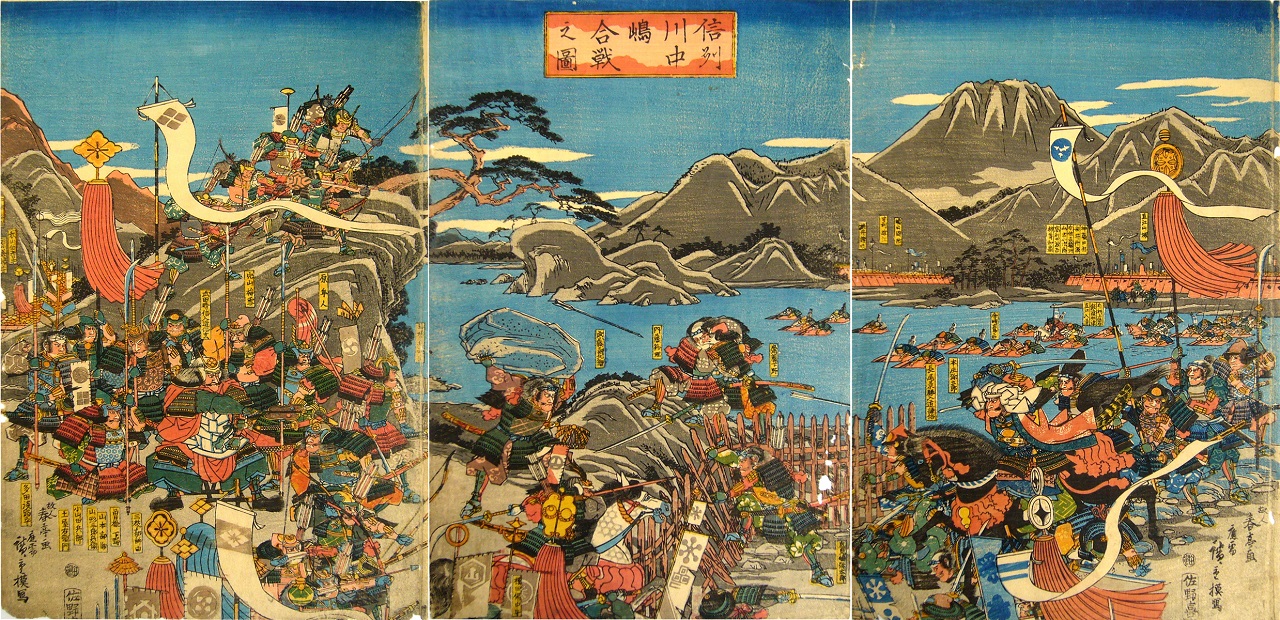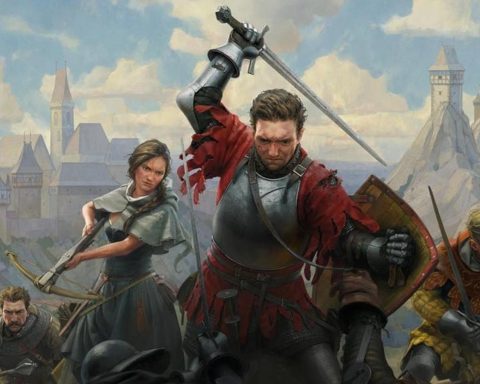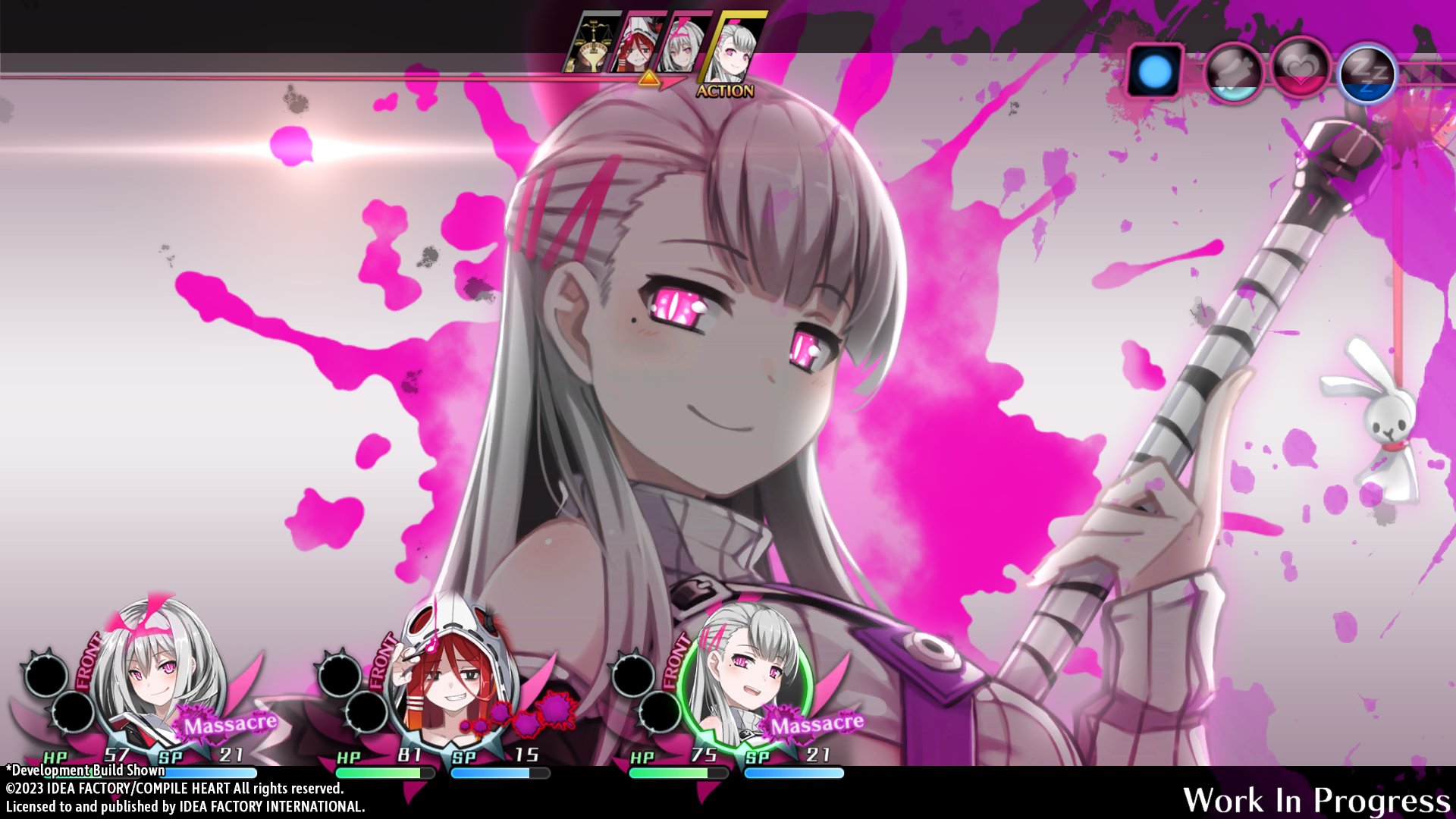Around this time next year, there will be a special event near Fuefuki in the heart of Yamanashi Prefecture (the one you travel through to get to Nagano from Tokyo). For decades there has been an annual recreation of the Battle of Kawanakajima, one of the most compelling and dramatic battles during the Sengoku period in Japan. Around 900 volunteers decked out in full medieval gear recreate the movements of that iconic battle, and it’s quite the sight for everyone watching. Next year, in 2023, it’s going to be a particularly big event, because it will be the 40th anniversary of this tradition.
(Note: This article was originally published in the Dee Dee Zine in November 2022 – keep that in mind when referencing the above dates)
If you happen to be in Japan next November, be sure to add that to your list of things to do. You can even volunteer to participate yourself, though you will need to nominate yourself well in advance. You can learn more by visiting peach-city.com (Fuefuki being “The Peach City” and the event occurring near Fuefuki city proper).
The actual battle itself took place in Nagano, and the battleground there has been preserved as a part of an open-air museum for people that have an interest in Japanese history. It is, along with Sekigahara battleground in Sekigahara, one of the better-preserved parts of Sengoku military history, and is today one of the most popular tourism sites in Nagano prefecture.
“The Battle of Kawanakajima” is a bit of a misnomer, though. Kawanakajima is actually a large plain within inland Japan and held strategic importance to the various warlords that vied for the territory. Two of the most powerful were Uesugi Kenshin and Takeda Shingen, and they actually fought five battles of the territory. Of those five, it was the fourth that has become the subject of everything from levels in Samurai Warriors to films and epic literature and was a truly massive affair.
In terms of casualties, it was the bloodiest battle of the era, with both sides losing well over half of their forces. It was also one of the relatively few battles of the Sengoku era where military tactics and strategic brilliance played a major role. Throughout much of the era, battles involved two sides squaring off in relatively open fields, or sieges. The (fourth) Battle of Kawanakajima, meanwhile, was a story of feints and deceptions.
- The battle map that appears at Kawanakajima Park today
The flow of the battle
Uesugi started the march, bringing around 13,000 men, and was determined to acquire Kawanakajima once and for all. Before long, he had reached one of the outlying fortresses in the area controlled by Takeda. While the general of that fortress only had 150 men of his own, he was able to use signal fires, which roused Takeda into action. Collecting his forces on the march, Takeda was able to field 20,000 soldiers in total.
Neither side was willing to actually attack, however. The way both forces were arrayed was such that the defender had the advantage. So Takeda had a brilliant idea, sending around 8,000 of his troops under the cover of darkness up the mountain where Uesugi was entrenched. A disruptive night attack would cause the Uesugi forces to flee, disorganised, down the mountain, and directly into the waiting main body of the Takeda forces.
This tactic was devised by one of Takeda’s leading generals, Yamamoto Kansuke, and was called the “woodpecker” strategy, in that the woodpecker would tap on the tree, which would cause scared insects to flee it for the woodpecker to eat.
The problem was that Uesugi learned of the strategy. There are many stories for how this happened – good quality scouts in the mountains, spies in the Takeda ranks, or the “woodpecker” forces lit fires that the Uesugi forces noticed – and any of these might be true. The result was that Uesugi, thinking quickly, was able to turn it into an opportunity. By the time the “woodpecker” forces reached the camp, they found it deserted. Uesugi had marshalled his forces and, by using rags to deaden the noise of horse feet, descended the mountain in complete secrecy.
Takeda woke up the next morning to face an organised surprise attack, from a numerically superior force, hours earlier than they should have been turning up!
From here, a number of incredibly dramatic things happened. One of Uesugi’s most important generals, Kakizaki Kageie clashed with the unit commanded by Takeda’s younger brother, Nobushige, which resulted in the death of the younger Takeda. Realising that the surprise attack had been countered and that the main Takeda force was in dire straits almost immediately, Yamamoto (who had remained with the main force and chosen not to lead the woodpecker unit) led a suicide charge at the main Uesugi force, which did result in his death, but also helped the rest of the main force keep their ranks together.
Nonetheless, the Uesugi forces made fast progress, and this led to the most dramatic moment of all; Uesugi, mounted on horseback, burst into Takeda’s command tent. Unarmed and carrying only his war fan, Takeda was able to ward off multiple strikes before one of his soldiers was able to wound Uesugi’s horse, which forced his retreat.
That personal duel, incidentally, informed the design of both Uesugi and Takeda in Samurai Warriors for many years. Across many iterations of the game series, Takeda’s character has taken a war fan into combat, while Uesugi’s character wields a blade with several prongs – one prong for each attack Takeda was able to fend off.
Somehow, despite suffering a direct attack on the command unit, the Takeda forces were able to hold it together just long enough for the woodpecker unit to arrive on the battlefield. Having reached an empty Uesugi camp in the mountain and realised that the enemy had stolen the march, this unit was able to attack the rear of the Uesugi forces, and after making rapid progress themselves, Uesugi and his generals decided to call it a day.
While battlefield casualties are always hard to properly assess from records of these things, the general consensus is that the Uesugi army lost about 60 per cent of its numbers, and the Takeda lost around 70 per cent. Those numbers would explain why Takeda was unable to pursue his hated enemy during their long retreat.
This was the last great battle for Kawanakajima. The fifth and final battle was a much smaller series of skirmishes over a period of weeks, with both sides apparently unwilling to test themselves as in that fourth battle again.
- Statue at Kawanakajima park today
Kawanakajima today
Today Kawanakajima is a large, public park that people love to visit for picnics and to let their kids run around. In addition to wandering the grounds where the battle took place, and visit a small open-air museum dedicated to retelling the story, you can also travel up the mountain where the Kenshin forces were stationed and look out over what they would have seen of the Takeda positions.
It’s a lovely day out, and you can take in both major locations in a couple of hours. As one TripAdvisor review notes: “My partner absolutely loves Japanese history and specifically certain people and this battlefield is where major battles took place so we went to see these historical areas. For us, it was very interesting and the signs had English so one is able to understand,” but as another notes: “Be sure to read up some of the facts before visiting this place. It would be more meaningful if you have an aerial map of the place to compare where each army was stationed at during the actual battle.”
With Nagano, and the park being much more accessible for the typical traveller than Sekigahara (which is buried deep in the relatively remote Gifu prefecture), Kawanakajima represents one of your best opportunities to see a largely untouched and intact battlefield from the Sengoku era. That makes it well worth a visit.
Note: This feature was originally published in the November 2022 issue of the Dee Dee Zine. As we are no longer publishing that magazine, we have republished it here for posterity.














